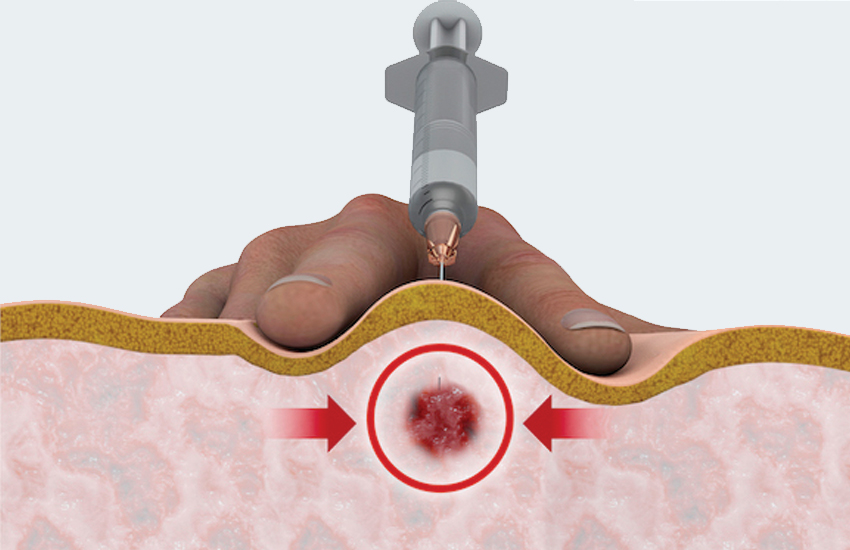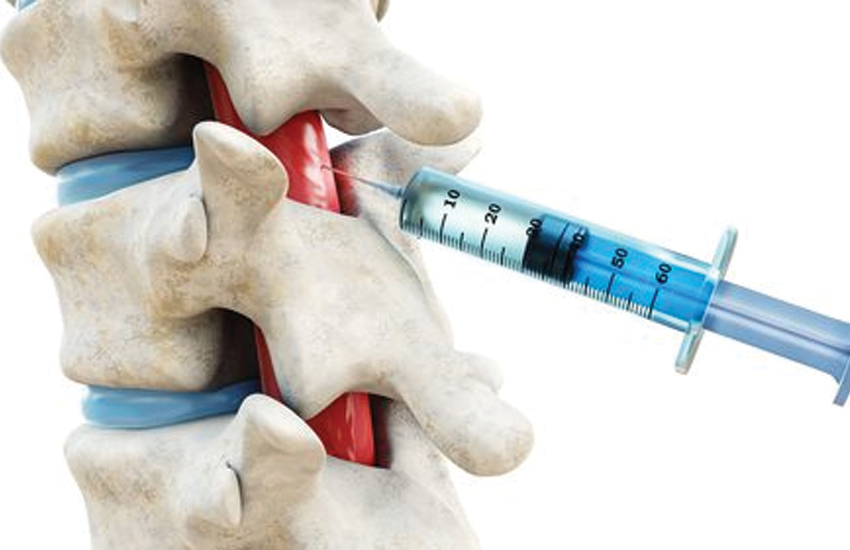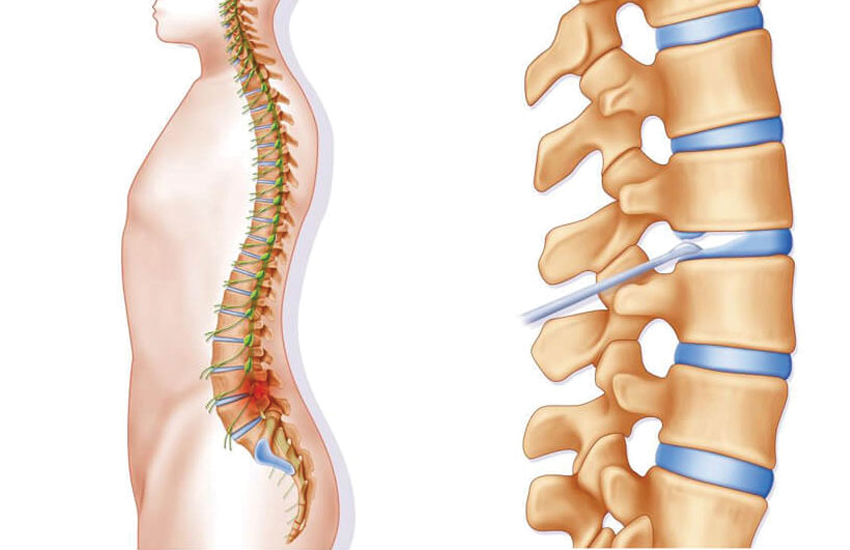Injections
Trigger point injections (TPI)
Trigger points are the painful focal points of acute tenderness in the muscles noted particularly in chronic pain. They could be active or silent. Trigger points may irritate the nerves around them and cause referred pain, or pain that is felt in another part of the body or at times numbness like feeling. Trigger point injection can be done with no medications (dry needling), or with local anesthetic only or with corticosteroids.
TPI is a procedure used to treat painful areas of muscle that contain trigger points, or knots of muscle that form when muscles do not relax. They can provide a short-term relief of about two to four weeks and can be repeated to a limited extent. With the injection, the trigger point is made inactive and the pain is alleviated. Usually, a brief course of treatment will result in sustained relief. Injections are given in our office and usually take just a few minutes. Several sites may be injected in one visit.


Cervical Thoracic and Lumbar Epidural Steroid Injections
Epidural space is a space in the spinal canal around the spinal cord and nerve roots (epidural space). Steroids (also called Cortisone at time) along with numbing medicine are injected in the epidural space to obtain pain relief. During the injection, an X-ray machine (fluoroscope) is used to guide the needle placement. A contrast or dye is also used to ascertain that the needle is positioned at the right spot. Corticosteroids are strong anti-inflammatory medicines used to relieve pain. The local anesthetic medicine helps give you immediate pain relief.
Corticosteroid medicines take longer to have an effect. ESI can help provide relief from leg pain by reducing swelling and inflammation.
It's time to schedule an appointment and find relief
If your suffering from neck, back or should pain and need
treatment or diagnosis, submit your information, and we’ll get back to you.
Facet joint injections
Facet joints are located on the back (posterior) aspect of the spine on each side of the vertebrae. There are two reasons to do a facet joint injection: to help with diagnosis – to determine if this could be a source of pain and for treatment purpose (therapeutic benefit). Steroids (also called Cortisone at time) along with numbing medicine are injected in the facet joints to obtain pain relief. The local anesthetic medicine helps give you immediate pain relief to help with diagnosis.
Corticosteroids are strong anti-inflammatory medicines used to relieve pain for longer duration to have more therapeutic benefit. Corticosteroid medicines take longer to have an effect. During the injection, an X-ray machine and a contrast (dye) is used to guide needle placement.


Medial Branch/Lateral Branch Nerve Block
Before the radiofrequency ablation procedure, a lateral branch or medial branch nerve block will have already been performed to prove that the patient’s pain is being transmitted by those nerves. The medial branch or lateral branch block acts as a test run before the neurotomy procedure. Additionally, a sacroiliac joint injection, facet joint injection, or other treatment methods will usually already have been attempted. Medial branch nerves are small nerves that feed out from the facet joints in the spine and carry pain signals from the facet joints to the brain. The medial branch block is often used as part of a 2-step diagnostic and treatment approach:
1. Role of a Medial Branch Block
A medial branch nerve block is a procedure in which an anesthetic is injected near small medial nerves connected to a specific facet joint. Typically several levels of the spine are injected in one procedure. If the patient experiences marked pain relief immediately after the injection, then the facet joint is determined to be the source of the patient’s pain. The procedure is primarily diagnostic, meaning that if the patient has the appropriate duration of pain relief after the medial branch nerve block, then he or she may be a candidate for a subsequent procedure – called a medial branch radiofrequency neurotomy (or ablation) – for longer term pain relief.
Radiofrequency ablation
A radiofrequency neurotomy or ablation is a type of injection procedure that destroys the functionality of the nerve using radiofrequency energy. It is used to treat facet joint pain or sacroiliac joint pain caused by arthritis or other degenerative changes, or from an injury. In this procedure, a heat lesion is created on certain nerves with the goal of interrupting the pain signals to the brain, thus eliminating pain.
There are two primary types of radiofrequency ablation:
- 1. A medial branch neurotomy (ablation) affects the nerves carrying pain from the facet joints
- 2. A lateral branch neurotomy (ablation) affects nerves that carry pain from the sacroiliac joints.
These medial or lateral branch nerves do not control any muscles or sensation in the arms or legs, so a heat lesion poses little danger of negatively affecting those areas. The medial branch nerves do control small muscles in the neck and mid or low back, but loss of these nerves has not proved harmful.
Joint injections
Deeper placed joints like hip and shoulder are injected using X rays or Ultrasound guidance. Botox Injections for pain, and Muscle Spasms Patients with some pain disorders do end up needing Botox injections, and some of these are performed under X ray guidance due to the deeper locations.
Sacroiliac Joint (SI) joint injections
Lower most end of the spine is Sacrum and is part of the pelvic ring. The ring is completed by two hipbones. The part of the hipbone that joins the Sacrum is called iliac bone and the joint is called Sacroiliac joint. There are two of these joints in the lower back on either side of the spine and is a common pain source. There are two reasons to do a facet joint injection: to help with diagnosis – to determine if this could be a source of pain and for treatment purpose (therapeutic benefit).
Steroids (also called Cortisone at time) along with numbing medicine are injected in the facet joints to obtain pain relief. The numbing medicine helps give you immediate pain relief to help with diagnosis. Corticosteroids are strong anti-inflammatory medicines used to relieve pain for longer duration to have more therapeutic benefit. Corticosteroid medicines take longer to have an effect. During the injection, an X-ray machine and a contrast (dye) is used to guide needle placement.